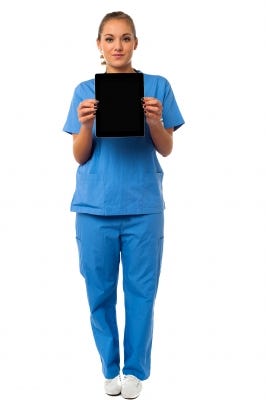Most patients and providers today are equipped with their own digital devices, and healthcare organizations are increasingly welcoming these disparate devices into the fold.
July 11, 2016
Most patients and providers today are equipped with their own digital devices--from smartphones to tablets--and healthcare organizations are increasingly welcoming these disparate devices into the fold.

Whether healthcare organizations like it or not, the personal connected devices of their employees are playing a role in patient. Just ask any nurse who has used his or her cell phone to text a physician who's proving hard to find.
While Bring Your Own Device (BYOD), as this trend is called, certainly comes with a host of risks--from privacy and security to HIPAA compliance--there's also an upside--like 24/7 connectivity, increased productivity, and less need for training in some cases.
After initial reluctance to embrace BYOD, the healthcare industry seems to be coming around to it. According to research from Philips, three-quarters of healthcare organizations and providers now support smartphones, almost two-thirds support tablets, and more than half now have an official policy around BYOD. Over the next year and a half, 68% of healthcare organizations believe BYOD will be fully supported.
So what's driving the adoption of BYOD? In part, physician demand. More than half of ambulatory care practice physicians say they use mobile devices to access patient records or reference data, and nearly a third of all physicians say they use smartphones to help manage individual patients, according to Black Book Market Research.
But BYOD also offers benefits like improving communciation, time savings, cost savings, and increased access to patient data.
For more on the rise of BYOD, what's driving the trend, and the benefits of embracing it, see Philips's infographic below:
(click to enlarge)

Jamie Hartford is MD+DI's editor-in-chief and serves as director of medical content for UBM's Advanced Manufacturing Group. Reach her at [email protected] or on Twitter @MedTechJamie.
[infographic courtesy of PHILIPS; image courtesy of STOCKIMAGES/FREEDIGITALPHOTOS.NET]
You May Also Like


